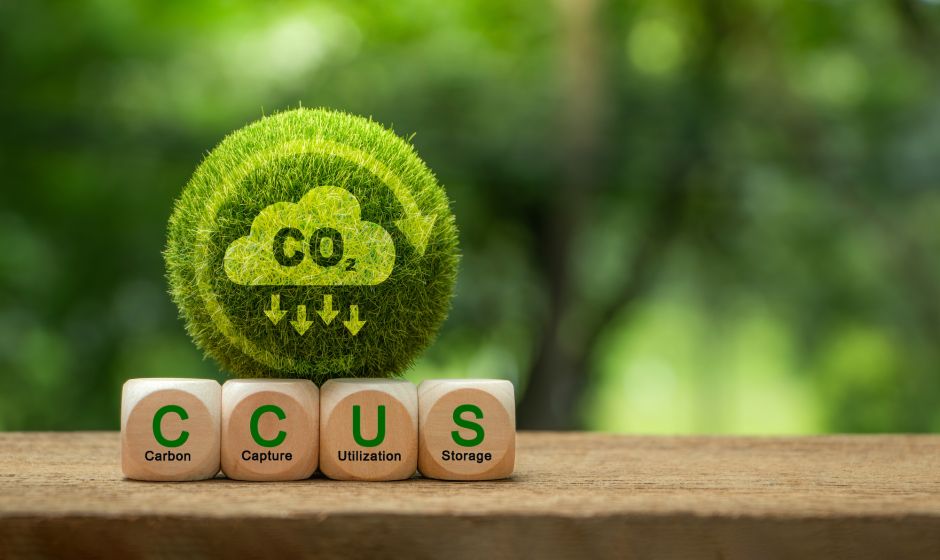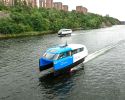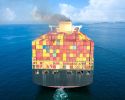Onboard Carbon Capture´s commercial success hinges on collaboration

Onboard Carbon Capture is increasingly mentioned as one way to reduce emissions. However, for the concept to be successful, it must be integrated into a value chain for storage, which requires cooperation between authorities, politicians, classification societies, and other industry players, writes DNV in a new report.
According to DNV's latest white paper “The potential of onboard carbon capture in shipping” published earlier this week, there is significant interest within the maritime industry for carbon capture and storage on board (OCCS) because it would allow ships to continue running on fossil fuels while being climate neutral. So is it just a matter of installing the necessary technology? No, it is not that simple. Studies have shown that the technology can be safely applied to ships, but it needs further optimization for maritime use. Key factors that influence the possibilities include a ship’s size, operational profile, engine capacity for electricity and heat production, and whether there is enough space for technology and storage, writes DNV.
However, it is not just about the onboard technology – for OCCS to be successful as a concept, it must also be commercially viable compared to other measures to reduce climate emissions. And this requires new regulations. Currently, the EU ETS (EU’s Emissions Trading System) is the only regulatory framework that currently creates commercial incentives for the technology, but work is also underway within the IMO to explore how OCCS can potentially be implemented in new greenhouse gas emission regulations. Future regulations for environmental and greenhouse gas emissions (GHG) must also account for captured CO2 to encourage the industry to develop and use the technology, writes DNV.
The commercial attractiveness of OCCS also depends on how smoothly it can be integrated into a broader infrastructure for CCUS (Carbon Capture, Utilization, and Storage) – the process where carbon dioxide is captured to be permanently stored in geological formations underground or reused for various purposes.
For shipping, the following steps are required:
Step 1 – Onboard Capture
On the ship, there is a system to capture, remove, and process the carbon dioxide to a state suitable for onboard storage, such as compressed gas, liquid, or solid form (bound in a mineral).
Step 2 – Onboard Storage
The captured carbon dioxide is temporarily stored onboard before being offloaded. Depending on the state of the carbon dioxide, different properties and storage systems are required.
Step 3 – Offloading
The ship needs to offload the captured carbon dioxide, either by making extra port calls or by offloading to vessels that transport carbon dioxide. The offloading frequency depends on the trade route and the availability of disposal facilities (e.g., carbon dioxide terminals, floating collection hubs, and carbon dioxide receiving ships).
Step 4 – Transport
After offloading, the carbon dioxide is transported to larger receiving facilities. The carbon dioxide can be transported by ship or pipelines (but also by trucks and trains). The facilities will be crucial nodes in the value chain, as further processing may be needed.
Step 5 – Permanent Storage or utilization
The value chain ends with either the permanent storage of the carbon dioxide in deep geological formations underground or utilization.
-
 Ny studie: Eldrivna pendelbåtar kan effektivisera Stockholms kollektivtrafik
Ny studie: Eldrivna pendelbåtar kan effektivisera Stockholms kollektivtrafik -
 EU: Sjöfartens utsläpp ökar
EU: Sjöfartens utsläpp ökar -
 Sociala relationer påverkar val av bränsle
Sociala relationer påverkar val av bränsle -
 Sjöfartens omställning kräver ”mjukare” påtryckningar
Sjöfartens omställning kräver ”mjukare” påtryckningar -
 Hon hade avtalad tid med Kapten ynkrygg
Hon hade avtalad tid med Kapten ynkrygg -
 Lighthouse omvärldsanalys 2025 – osäkerhet och tullar präglar sjöfarten
Lighthouse omvärldsanalys 2025 – osäkerhet och tullar präglar sjöfarten -
 Se seminariet Shipping in the Marine Environment
Se seminariet Shipping in the Marine Environment -
 Vad betyder egentligen de 90 procenten?
Vad betyder egentligen de 90 procenten? -
 Hålla där...
Hålla där... -
 Ny rapport: Klimatförändringarna ett hot mot de flesta större hamnar i världen
Ny rapport: Klimatförändringarna ett hot mot de flesta större hamnar i världen

